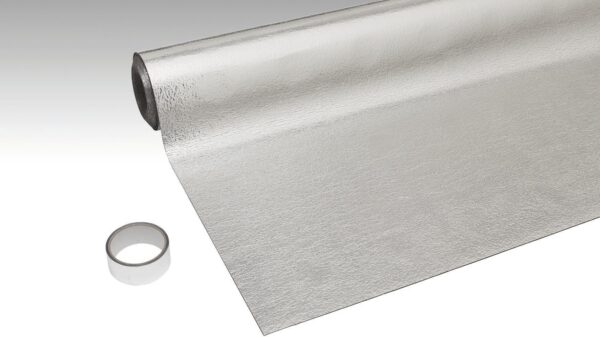Don’t forget the proper underlay for floating parquet flooring

All parquet floors require a proper underlay for floating installation. The underlay for parquet has several technical purposes:
When installing wooden parquet and laminate parquet on a concrete subfloor, it is important to protect them from possible excess moisture from the concrete. When installing on a concrete subfloor, the underlay should have an integrated moisture barrier or, if not, a 0.2mm thick moisture barrier should be installed under the underlay beforehand. For SPC and LVT vinyl parquet, the moisture barrier is not important.
The second purpose of the parquet underlay is to alleviate slight irregularities in the subfloor. However, it should be noted that the flatness of the subfloor must meet the standards suitable for material installation i.e., the underlay is certainly not a panacea in this regard. The flatness of the subfloor should always be checked before installation. If the subfloor does not meet the standards, it must be leveled sufficiently before starting the installation work.
The third purpose of the parquet underlay is to dampen footstep and impact noise i.e., to prevent movement on the floor or falling objects from creating excessive noise. This standard is measured in decibels (dB) for impact noise and in % for movement noise, and the higher the numerical value, the better the specific underlay is at damping impact or footstep noise.
The fourth, and quite important aspect, is the compressive strength of the parquet underlay. Compressive strength is particularly important for thin floating floor coverings such as 4-5mm thick SPC, LVT, and 6-7mm thick laminate or veneer parquet. Cheaper underlay foams are not suitable for these products. For example, using a sparse 3mm thick underlay foam for SPC / LVT floors will cause excessive sinking due to the low compressive strength of the underlay foam when pressure is applied to the floor and its click connection, and the click connections may come loose or even break. Similar problems may occur with thin 6-7mm laminate and veneer parquets. High compressive strength underlay matting is also important for small format wooden and laminate parquets such as floating herringbone parquets. Possible excess irregularities in the subfloor will amplify the aforementioned problem. Compressive strength is measured in kilopascals (kPa), and the higher the compressive strength, the better the underlay mat withstands the pressure applied to it. The requirements for compressive strength of the underlay are usually stated in the manufacturers’ installation instructions, and if the compressive strength of the used underlay is lower than the required figure, the manufacturer’s warranty will not apply in case of possible problems.
As a fifth aspect, I would point out the thermal resistance of the parquet underlay in the case of heated floors. Airy and lightweight underlay for parquet, such as white underlay foam, are not good heat conductors and have excessive thermal resistance. As a general rule, the heavier / denser the underlay, the smaller its thermal resistance. It can be considered good if the thermal resistance of the parquet underlay is 0.01m2 × K/W.
When using an underlay mat with a moisture barrier film, the overlying moisture barrier film should be installed on the next row, and the connection points should ideally be taped together. It is important to ensure that the underlay itself does not overlap, as this causes irregularities in the subfloor. It is recommended to install the underlay also on the floor with about 1cm overlap on the wall, as this way you protect the flooring material also in the areas near the walls in case of excess moisture in the concrete.
High-quality underlay for parquet flooring
Floating parquet for high-quality underlay